Filter by
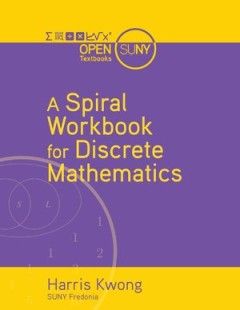
A Spiral Workbook for Discrete Mathematics
This is a text that covers the standard topics in a sophomore-level course in discrete mathematics: logic, sets, proof techniques, basic number theory, functions, relations and elementary combinatorics, with an emphasis on motivation. It explains and clarifies the unwritten conventions in mathematics, and guides the students through a detailed discussion on how a proof is revised from its draft…
- Edition
- -
- ISBN/ISSN
- -
- Collation
- -
- Series Title
- -
- Call Number
- -
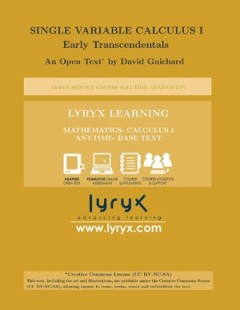
Single Variable Calculus I Early Transcendentals
The emphasis in this course is on problems—doing calculations and story problems. To master problem solving one needs a tremendous amount of practice doing problems. The more problems you do the better you will be at doing them, as patterns will start to emerge in both the problems and in successful approaches to them. You will learn quickly and effectively if you devote some time to doing pr…
- Edition
- -
- ISBN/ISSN
- -
- Collation
- -
- Series Title
- -
- Call Number
- -
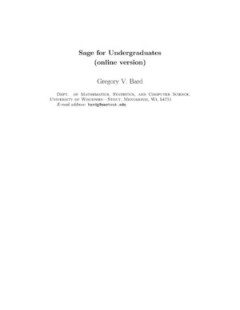
Sage for Undergraduates Online Version
This textbook serves admirably as an introduction for newcomers to Sage as well as a reference for those with some experience. It is written in an engaging and informal style and does an excellent job in explaining how Sage works. The book can be used profitably as an auxiliary text in any undergraduate mathematics class with a computational component, and it can be used in the mathematical sof…
- Edition
- -
- ISBN/ISSN
- -
- Collation
- -
- Series Title
- -
- Call Number
- -
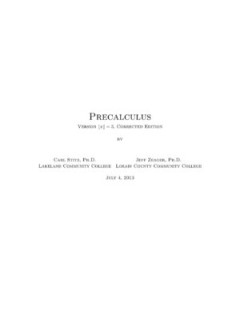
Precalculus, Version [π] = 3, Corrected Edition
Precalculus (was College Algebra) is an introductory text. The material is presented at a level intended to prepare students for Calculus while also giving them relevant mathematical skills that can be used in other classes. The authors describe their approach as "Functions First," believing introducing functions first will help students understand new concepts more completely. Each section inc…
- Edition
- -
- ISBN/ISSN
- -
- Collation
- -
- Series Title
- -
- Call Number
- -
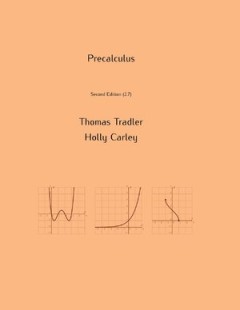
Precalculus, Second Edition (2.7)
These are notes for a course in precalculus, as it is taught at New York CityCollege of Technology — CUNY (where it is offered under the course numberMAT 1375). Our approach is calculator based. For this, we will use thecurrently standard TI-84 calculator, and in particular, many of the exampleswill be explained and solved with it. However, we want to point out thatthere are also many other c…
- Edition
- -
- ISBN/ISSN
- -
- Collation
- -
- Series Title
- -
- Call Number
- -
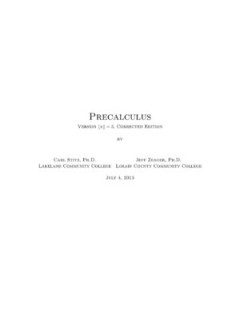
Precalculus, College Algebra and Trigonometry
The authors are instructors at large community colleges in Ohio, and the book has now been adopted at several other locations. Those who have used the book expect to continue using it. One community college instructor now using it for the fourth time says he highly recommends the book to other colleagues and that his students often make positive comments about the book. He has found the authors…
- Edition
- -
- ISBN/ISSN
- -
- Collation
- -
- Series Title
- -
- Call Number
- -

Precalculus
The Mathematics Department of the University of Washington designed its precalculus to concentrate on two goals:A review of the essential mathematics needed to succeed in calculusAn emphasis on problem solving, the idea being to gain both experience and confidence in working with a particular set of mathematical toolsThis text was written with those goals in mind. It does not look like the wide…
- Edition
- -
- ISBN/ISSN
- -
- Collation
- -
- Series Title
- -
- Call Number
- -
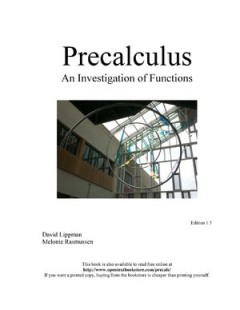
Precalculus An Investigation of Functions
Precalculus: An Investigation of Functions is a free, open textbook covering a two-quarter pre-calculus sequence including trigonometry. The first portion of the book is an investigation of functions, exploring the graphical behavior of, interpretation of, and solutions to problems involving linear, polynomial, rational, exponential and logarithmic functions. An emphasis is placed on modeling a…
- Edition
- -
- ISBN/ISSN
- -
- Collation
- -
- Series Title
- -
- Call Number
- -
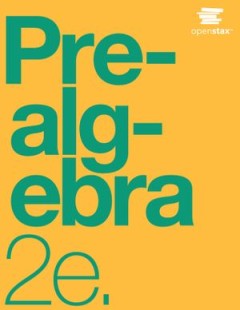
Prealgebra 2e
Prealgebra 2e is designed to meet scope and sequence requirements for a one-semester prealgebra or basic math course. The book’s organization makes it easy to adapt to a variety of course syllabi. The text introduces the fundamental concepts of algebra while addressing the needs of students with diverse backgrounds and learning styles. Each topic builds upon previously developed material to d…
- Edition
- -
- ISBN/ISSN
- 9781951693190
- Collation
- -
- Series Title
- -
- Call Number
- -

Open Intro Statistics, 2nd Edition
OpenIntro Statistics strives to be a complete introductory textbook of the highest caliber. Its core derives from the classic notions of statistics education and is extended by recent innovations. The textbook meets high quality standards and has been used at Princeton, Vanderbilt, UMass Amherst, and many other schools. We look forward to expanding the reach of the project and working with teac…
- Edition
- -
- ISBN/ISSN
- -
- Collation
- -
- Series Title
- -
- Call Number
- -
 Computer Science, Information & General Works
Computer Science, Information & General Works  Philosophy & Psychology
Philosophy & Psychology  Religion
Religion  Social Sciences
Social Sciences  Language
Language  Pure Science
Pure Science  Applied Sciences
Applied Sciences  Art & Recreation
Art & Recreation  Literature
Literature  History & Geography
History & Geography